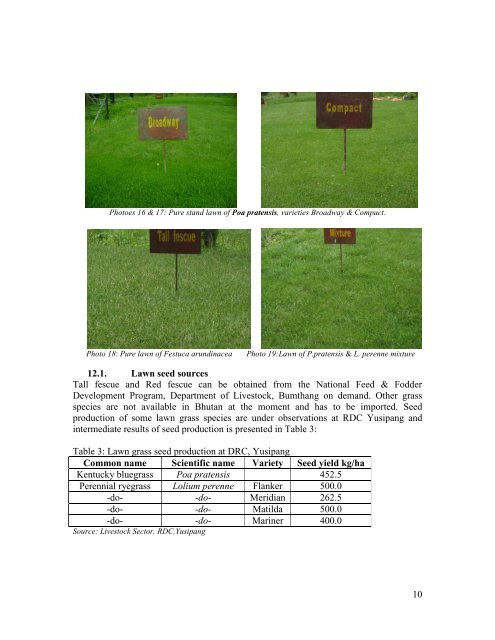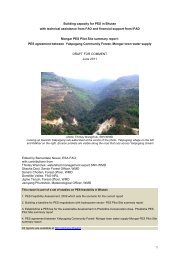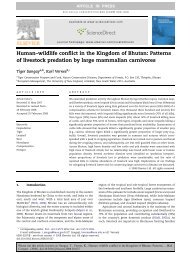A guide to Lawn Grass Development for temperate - DoFPS
A guide to Lawn Grass Development for temperate - DoFPS
A guide to Lawn Grass Development for temperate - DoFPS
Create successful ePaper yourself
Turn your PDF publications into a flip-book with our unique Google optimized e-Paper software.
Pho<strong>to</strong>es 16 & 17: Pure stand lawn of Poa pratensis, varieties Broadway & Compact.<br />
Pho<strong>to</strong> 18: Pure lawn of Festuca arundinacea<br />
Pho<strong>to</strong> 19:<strong>Lawn</strong> of P.pratensis & L. perenne mixture<br />
12.1. <strong>Lawn</strong> seed sources<br />
Tall fescue and Red fescue can be obtained from the National Feed & Fodder<br />
<strong>Development</strong> Program, Department of Lives<strong>to</strong>ck, Bumthang on demand. Other grass<br />
species are not available in Bhutan at the moment and has <strong>to</strong> be imported. Seed<br />
production of some lawn grass species are under observations at RDC Yusipang and<br />
intermediate results of seed production is presented in Table 3:<br />
Table 3: <strong>Lawn</strong> grass seed production at DRC, Yusipang<br />
Common name Scientific name Variety Seed yield kg/ha<br />
Kentucky bluegrass Poa pratensis 452.5<br />
Perennial ryegrass Lolium perenne Flanker 500.0<br />
-do- -do- Meridian 262.5<br />
-do- -do- Matilda 500.0<br />
-do- -do- Mariner 400.0<br />
Source: Lives<strong>to</strong>ck Sec<strong>to</strong>r, RDC,Yusipang<br />
10





